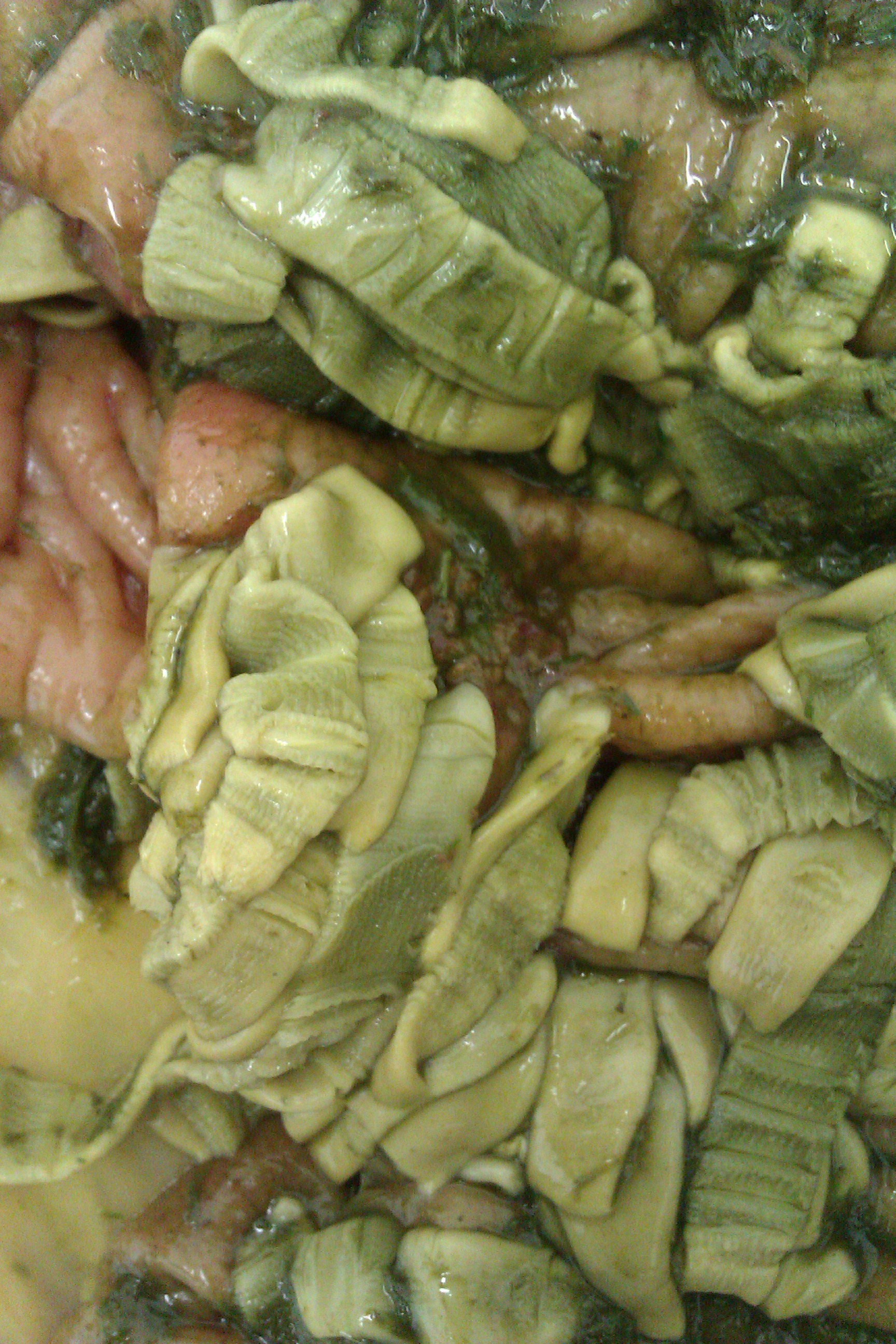Winter Worming
As winter approaches and the temperatures drop we need to take a different approach to worming. Worm egg counts are not effective at this time of year because small redworm encyst and we target other parasites which are not detected on worm egg count. These include tapeworm and migrating large red worm. Instead it is more appropriate to use a well-timed, targeted wormer over winter.
 Encysted Small Redworm
Encysted Small Redworm
Small redworm are the most common internal parasite we currently see in horses. During the summer they grow rapidly, and we can monitor the horses dung for eggs. If large numbers of eggs are being passed we then treat these horses with wormers. However when the temperature drops, these small red worm burrow into the gut wall and ‘encyst’. This is to avoid the cold conditions of winter. While encysted they do not lay eggs, meaning worm egg counts are ineffective at this time of year. When the temperatures rise in spring these worms emerge at the same time on-mass. This can cause a massive diarrhoea, which can be fatal. As we have no effective test, we recommend worming ALL horses once a year for encysted red. The time to do this is late autumn/early winter, after the frosts have appeared. The only wormers which treat encysted red worm are, a single dose of moxidectin, or five consecutive days of fenbendazole. Tapeworm
Tapeworm
About a quarter of horses will have picked up tapeworm over the summer, from eating infected Orbatid/Box mites off the pasture. While the adults are large, and can cause colic, they take up to 6 months to grow. This means that targeting them once a year at the end of the grazing season is usually effective to control tapeworm levels. If tapeworm has been an issue, it may be worth targeting them every 6 months. The eggs are passed very intermittently, meaning a negative worm egg count does not rule out tapeworm. The best tests measure the horses response (a high antibody level) to check for a significant burden. Your vet can do this via a blood sample, or you can do it yourself using an Equisal Saliva Swab. In this test a sponge is used to soak up the horse’s saliva, this is then sent to a lab to test for the antibody levels. The other option would be to assume the horse has tapeworm and treat the horse with an effective wormer. This has been the traditional method, but means for every horse needing treatment and extra three were treated un-necessarily. The only wormers which treat for tapeworm, are praziquantel at a ‘normal dose’ or pyrantel at a ‘double dose’.
Pictured left - tapeworm in the horse's gut.
Migratory Large Redworm
Traditionally these were the commonest parasite, however in recent times they have become much rarer. The reason why the large red worms are almost extinct in many horse populations is down to the intensive worming, every 6 - 8 weeks is recommended and has been since the 1980's . That intensive worming was advised as it was suspected that the large red worms were a significant cause of colic, although analysis of the incidence of colic since the large redworms have declined in numbers, has not changed.
Over the warm grazing season the eggs in the dung are hatching into the infective larvae on the grass. Like small red worm, the horse is then infected when they eat grass covered with these infective larvae. Once ingested large redworm take 6-12 months to fully grow and lay eggs. Theses worms cause problems as they migrate into the horse’s blood vessels, liver and kidneys. While migrating they can cause severe damage to a wide range of organs.
We have seen the emerging larvae causing diarrhoea and in some cases, death, this autumn as we emerged from the drought.
A good way to target large red worm before they grow and cause issues is by worming at the end of the grazing season, in late autumn/early winter.(November to December) Moxidectin or Ivermectin are the best options to treat the migrating stages, as fenbendazole only partially treats for these.
Bots
Bots are a pupae from fly larvae which live in the stomach. Occasionally the pupae will be seen in the horse’s faeces, or on gastroscopes. Bots very rarely cause disease so they usually do not need targeting, however the treatment for encysted red worm will cover bots too.
Pin Worm
Pin worm can become an issue when horses are brought in to stables over the winter. The adults live in the rectum, and lay their eggs around the anus. While not a serious issue, this can be intensely itchy and cause the horse to rub their tail. You can test for this using a piece of Sellotape which is stuck around the anus and then sent to a lab to examine under a microscope. It is generally recommend only treating for pin worm when it is diagnosed.
Winter Plan
There are lots of different variations on worming plans for different ages, environments, and health statuses. Also many wormers cannot be used in certain groups of animals, for example, moxidectin should not be used in foals under 4 months old. This means your own vet (or SQP) is often best placed to create a plan. Here is an example plan which is suitable for most healthy, adult horses, but we recommend discussing it with your own vet.
a) Late November/December test all horses with an Equisal Saliva test for tapeworm. If positive use a moxidectin/praziquantel combination wormer for tapeworm and encysted red worm. If negative treat only with moxidectin, for encysted red worm.
b) OR assume all horses have tapeworm and treat Late November/December with a moxidectin/praziquantel combination wormer.
After this treatment, throughout the rest of the winter, it is unlikely the horses will catch new parasites. This is because the temperatures in winter are too low for eggs to hatch into larvae (which are the infective stage) so we would then recommend re-starting worm egg counting when temperatures rise in spring.
What Dose
It is important to correctly dose your horse with the wormer. It can be difficult to work out how much to give. Using weigh bridges if available or more commonly weigh tapes to work out an accurate dose. It is very important not to under dose, because under dosing causes resistance in the worms which are not properly treated. It is also important to make sure that the wormer is all swallowed and not spat out. A good demonstration on how to train a horse to accept a worming syringe is available online if you search for Don't Break Your Vet - Worry-Free Worming.
Article by Robert Peckham, BVMedSci (Hons) BVM BVS (Hons), Paragon Equine.
Tel: 01768 483789
Email: This email address is being protected from spambots. You need JavaScript enabled to view it.
Website: Paragon Equine Veterinary, Cumbria



